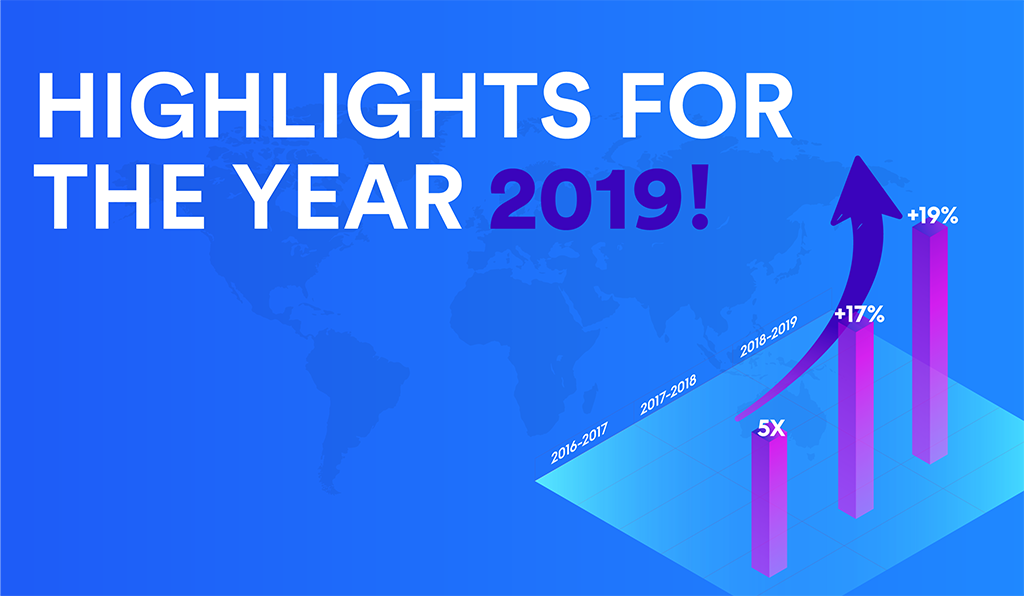Understanding SOC 2 Type I Certification – What it Means for You and Why Should You Care
What It Means For Our Client
While the SOC2 Type-I certification is a badge of compliance, it also represents a fundamental promise to our clients and a critical differentiator in the marketplace. For Xgrid, this accreditation means we are not only committed to securing our operations but also to fostering a relationship of trust and reliability with our customers. It reassures our partners and stakeholders of our proactive approach to risk management, highlighting our commitment to continuously evolve our security measures in response to emerging threats and changing industry standards. This achievement empowers us with a competitive edge, showcasing our dedication to excellence in information security and client data protection.
Reflecting on this accomplishment, our CEO stated, “Obtaining SOC2 certification is not just a compliance checkbox; it’s a commitment to the highest standards of information security. It is the assurance we provide to our clients that their data is handled with utmost care, protected by robust controls, and a testament to our unwavering dedication to excellence in security practices.” From Drata’s perspective, they added, “With Drata as their trusted partner in the SOC2 certification journey, Xgrid has not only streamlined the audit process but also embraced a proactive approach to information security. Our expertise has been instrumental in identifying vulnerabilities, ensuring compliance, and reinforcing Xgrid’s commitment to safeguarding data with the highest standards of security.”
SOC 2 Certification Explained in Simple Terms
SOC 2, short for Service Organization Control 2, is a framework specifically designed for service organizations. It aims to provide a clear and detailed evaluation of how a company manages and safeguards customer data, focusing on security, availability, processing integrity, confidentiality, and privacy. The Type I report of SOC 2 is particularly concerned with assessing the design and implementation of an organization’s controls at a specific point in time.
The Five Pillars of SOC 2
The SOC 2 framework is built around five key principles that are crucial for the secure and ethical management of customer data. Each principle targets a specific area of data management, ensuring comprehensive coverage of all aspects of data security and privacy.
Security
The security principle emphasizes the importance of protecting systems and data from unauthorized access, disclosure, and damage. It ensures that customer data remains confidential and intact, safeguarding the integrity of information.
Availability
Availability pertains to the system being operational and accessible for use according to the company’s terms of service. This principle ensures that services are available as promised or agreed upon, minimizing downtime and ensuring reliability.
Processing Integrity
Processing integrity focuses on the accuracy, timeliness, and completeness of system processing. It ensures that systems operate in a manner that is consistent, authorized, and aligned with the organization’s objectives, guaranteeing that data processing meets the highest standards of quality and efficiency.
Confidentiality
Confidentiality involves the protection of information deemed sensitive or confidential. This principle ensures that such information is accessed and disclosed only as agreed upon, maintaining the privacy and security of data.
Privacy
The privacy principle addresses the handling of personal information in accordance with the company’s privacy notice. It covers the collection, use, retention, disclosure, and disposal of personal information, ensuring that all actions are in compliance with privacy standards and commitments.
Why Should You Care About SOC 2 Certification?
Achieving SOC 2 Type I certification is not merely a regulatory milestone. It is also a proof of an organization’s dedication to data security and privacy. For customers and partners, it serves as a guarantee of the company’s commitment to maintaining a secure and trustworthy environment for their sensitive data.
Trust and Peace of Mind
For customers, the SOC 2 certification offers reassurance that the organization has undergone a rigorous evaluation of its data management practices. It provides an independent validation of the company’s efforts to secure data against potential threats, offering peace of mind in an age of frequent cyber incidents.
Enhanced Security
The certification process entails a thorough audit by an independent auditor, ensuring that the company’s security measures are not only in place but are also effective and robust. This external validation reinforces the company’s security posture, highlighting its commitment to safeguarding customer data.
Competitive Advantage
SOC 2 Type I certification can distinguish a company from its peers. It showcases a commitment to excellence in data security and privacy, enhancing the company’s reputation and potentially leading to increased customer trust and business opportunities.
What is SOC 2 Compliance – Checklist Approach
Achieving SOC 2 compliance is a rigorous process that requires thorough preparation, detailed execution, and continuous maintenance. The following checklist offers a streamlined approach to guide organizations through the complexities of SOC 2 compliance.
Assess the Need for Type I Audit
The initial step involves deciding whether to commence with a Type I audit, which is less extensive and serves as a preliminary assessment of the controls at a specific point in time, before moving on to the more detailed Type 2 audit.
Define the Audit Scope
Identifying the system components and Trust Services Criteria relevant to your organization is crucial. This step ensures that the audit focuses on the areas most critical to your operational and security practices.
Internal Communication
Ensuring that all stakeholders understand their role in the audit process is key to a smooth compliance journey. Clear communication helps align efforts and clarifies expectations across the organization.
Gap Assessment
Conducting a gap assessment to evaluate current practices against SOC 2 requirements is essential. This step identifies areas for improvement and helps in planning the necessary changes to achieve compliance.
Remediate Control Gaps
Once gaps are identified, implementing changes to meet SOC 2 standards is the next critical step. This may involve updating policies, procedures, and control mechanisms to ensure they align with compliance requirements.
Customer and Prospect Communication
Transparently sharing your security practices with customers and prospects is vital for building trust. It demonstrates your commitment to protecting their data and maintaining high security standards.
Continuous Monitoring
Implementing processes and tools for ongoing control monitoring and evidence collection is crucial for ensuring continuous compliance. This involves regular reviews and adjustments to adapt to new threats and changes in the organization.
Select an Auditor
Choosing an audit firm that aligns with your company’s values and understands your industry is important. The right auditor can provide insightful feedback and guidance, making the compliance process more effective.
Undergo the SOC 2 Audit
Collaborating with your chosen auditor to provide necessary documentation and evidence is the final step. This collaboration facilitates a thorough review of your compliance with SOC 2 standards, highlighting your organization’s commitment to security and data protection.
Remember! Always Maintain Compliance and Prepare for Recertification
After successfully completing the SOC 2 audit, it’s essential to not view compliance as a one-time achievement but as an ongoing commitment. Regularly updating and maintaining your control environment ensures that your organization remains compliant with SOC 2 standards over time. This includes –
- Regular Review and Update of Policies and Procedures – As your organization evolves, so too should your policies and procedures. Regular reviews allow you to adjust to changes in technology, business practices, and regulatory requirements.
- Employee Training and Awareness Programs – Continuous education and training for employees about security practices and compliance requirements are crucial. This ensures that your workforce remains vigilant and informed about their role in maintaining SOC 2 compliance.
- Incident Management and Response Planning – Having a robust incident management and response plan in place is vital. This ensures that any security incidents are managed effectively and that their impact on your compliance status is minimized.
- Engagement with Third-party Vendors – If your organization relies on third-party vendors, it’s important to ensure they also adhere to SOC 2 compliance requirements or equivalent standards. Regular assessments of vendor compliance can mitigate risks to your own compliance status.
- Preparation for Recertification Audits – SOC 2 compliance is not a one-time event. Organizations must undergo regular audits to maintain their certification. Preparing for these recertification audits involves ensuring that all controls are up to date and functioning as intended, and that documentation is current and readily available.
The Most Effective Way to SOC 2 Certification: How We Did It
Xgrid’s journey towards SOC 2 Type-I certification exemplifies a practical and efficient strategy, markedly enhanced by partnering with an auditing agency such as Drata. This partnership exemplifies the power of strategic collaborations in streamlining the compliance process, ensuring adherence to the AICPA’s stringent requirements.
Initial Steps and Collaboration with Drata
At the outset, Xgrid engaged with a third-party auditing firm for a rigorous evaluation of its information security policies and procedures. Drata’s detailed examination of Xgrid’s infrastructure, policies, and processes was pivotal in ensuring compliance. The audit concentrated on the design and implementation of critical security controls at a specific moment, validating Xgrid’s preparedness to meet SOC 2 requirements.
In collaboration with Drata, Xgrid utilized the firm’s expertise to thoroughly document its controls and policies. This partnership was crucial in formally establishing the applicable controls within the organization, leading to SOC 2 Type-I certification. This certification serves as external acknowledgment of Xgrid’s commitment to maintaining high information security standards.
Preparation for SOC 2 Type-II Certification
Following the SOC 2 Type-I certification, Xgrid maintained strict adherence to the established controls and policies. This steadfast dedication set the stage for achieving SOC 2 Type-II certification within a year, highlighting the significance of continuous compliance with security practices.
Challenges Encountered
Throughout its path to SOC 2 Type-I accreditation, Xgrid faced several challenges:
- Alignment with SOC 2 Standards: Aligning current information security controls, policies, and processes with SOC 2 standards required an extensive examination and, occasionally, a redesign of existing procedures.
- Vulnerability Management: The auditing process uncovered vulnerabilities, necessitating immediate and effective remediation efforts to ensure operational continuity.
- Resource Allocation: Particularly for firms new to the SOC 2 certification process, balancing the need for specialized personnel, time, and financial resources with daily operations demanded thorough planning and efficient resource management.
- Effective Communication and Collaboration: Ensuring cohesive communication and collaboration across various departments and stakeholders within Xgrid was critical for a unified certification process.
- Maintaining SOC 2 Type-I certification necessitates an ongoing commitment to refining security policies and adapting to the dynamic cybersecurity threat landscape. Xgrid’s continuous dedication to compliance and enhancement is vital for sustaining the certification’s integrity over time.




